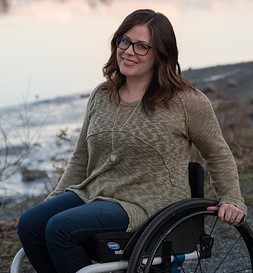Researchers at the University of California, Davis, have developed an investigational brain-computer interface (BCI) that holds promise for restoring the voices of people who have lost the ability to speak due to neurological conditions. BCI consists of four microelectrode arrays that are surgically implanted into an area of the brain that produces speech.
One person, who has ALS and is unable to speak, was selected to participate in the BrainGate2 clinical trial. He successfully communicated with his family through the new technology by translating neural activity into text.
As originally published in the scientific journal Nature and later in UC Davis Health, the activity of the brain’s neurons is transmitted to computers that interpret the signals and reconstruct a person’s digital voice tract.
The BCI translated the study participant’s neural signals to audible speech. The subject’s synthesized voice was understood almost sixty percent of the time as opposed to only four percent when he did not use the BCI.
Algorithms Assist Real-time Speech
Hundreds of neurons were observed in connection with neural activity. The neurons were aligned with speech sounds produced by the participant thus helping the algorithm to reconstruct the participant’s voice.
Clinical Trials Provide Hope for People Who Are Unable to Speak
When we lose the ability to speak, we lose a large part of our identity.
These are the thoughts behind the motivation of David Brandman, the neurosurgeon responsible for implantations in study participants. Prof. Brandman is also the principal investigator of the BrainGate2 clinical trial that is now enrolling participants. According to the Professor, results received from the team’s research provide a significant amount of hope for people who lose the ability to talk and communicate with others.
For more information about the BrainGate2 trial, please visit braingate.org.
Brain to Voice, An AI Overview
UC Davis researchers have successfully developed a brain-computer interface that restores voices of individuals who are unable to speak due to their neurological conditions. Neural prosthetics is a field that develops technologies to restore impaired sensory or cognitive functions caused by neurological injuries or disorders. The devices operate by interfacing either directly through implants or indirectly through brain-computer interfaces.
Examples include cochlear (a cavity of the inner ear) implants to improve hearing, prosthetics used for amputees, and devices to assist people who are paralyzed and cannot move nor communicate. Although the findings appear to be promising, Brain-to-Voice is still in its early stages.
These results must now be duplicated with participants who are unable to speak due to other causes such as a stroke.







